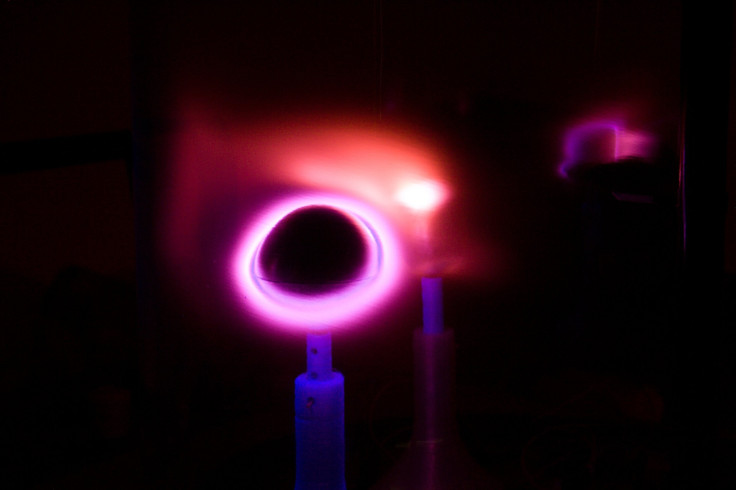Scientists Successfully Recreate Earth's Northern Lights And Other Planets' Auroras

Scientists at NASA’s Langley Research Center in Hampton, Va., have successfully recreated the Northern Lights, Earth’s most beautiful light show, combining all of the necessary ingredients, such as a magnetic field, charged particles and a sphere.
The reenactment of Earth’s Northern Lights, also known as the aurora borealis, is generated by a device called “Planeterrella,” a spinoff of an experiment from the 19th century called the “Terrella,” which first demonstrated the glowing result of electrically-charged particles mixing with a magnetic field.
“It recreates the atmosphere of the Earth at 80 km in altitude when an aurora is occurring,” Guillaume Gronoff, a research scientist at NASA’s Langley Research Center, said in a statement. “The aurora is created when particles, originally from the sun, precipitate into the atmosphere.”
Auroras are most commonly pale green and pink in color but shades of red, yellow, green, blue and violet also have been reported. The phenomenon is called as 'aurora borealis' in the northern hemisphere and 'aurora australis' in the southern hemisphere.

NASA's scientists have upgraded the old “Terrella” by adding several spheres, which allows them to recreate the auroral ovals that occur on Earth and on several other planets. Scientists said they can also simulate the auroras on Neptune and Uranus, when their magnetic fields are directly pointing toward the sun.
A Planeterrella machine is primarily used for demonstrating to others how each variable interacts to create an aurora. Although there are approximately 10 other Planeterrella machines in Europe, the one at Langley is among the first in the U.S., NASA said.
Gronoff, who led the creation of the Planeterrella, said also that the experiment in question is only an illustration as more complex phenomena are occurring in the magnetospheres of planets. According to him, there are various gases on each planet that can create different color effects within auroras.
“The Planeterrella can help teach students about solar wind, how electrically charged particles follow the magnetic field and the exciting space missions NASA is launching to space to study these processes,” said Gronoff, who is planning to use a few extra magnets and some carbon dioxide to simulate the aurora on Mars.
© Copyright IBTimes 2024. All rights reserved.






















